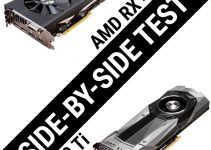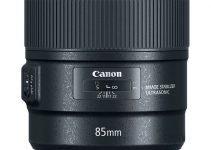It’s been a few years that we’ve been hearing the same mantra: “Apple is letting go of the pro users, they shifted their focus on consumer electronics and they do not care anymore for the pro”. Truth to be told there was a little bit of evidence in that claim. The absence of any kind of successor to the 2013 Mac Pro, for instance.
The pursuit of thin and light laptops that sacrificed ports and heat dissipation. But, at last, that statement has been disproved by Apple itself. Unveiling the new Mac Pro not only they jumped back in the arena of the professional users, but they went straight to the small niche of ultra-pro-users, those post houses and VFX studios that can drop checks over the 10K mark to upgrade a single workstation.
That’s not exactly what the majority of media content producers thought of when they were ranting for the absence of pro equipment. Be as it may, many intermediate-level content creators have been left in a weird spot as for hardware choices, since the options for those who want to stay in the MacOS ecosystem with a desktop workstation are the not-upgradable iMac Pro or the insanely expensive Mac Pro. That’s probably why many are thinking of turning to the Hackintosh side of the force, just as Optimum Tech did assembling his first Hackintosh ever.
Let’s get it clear immediately. This is in no way a machine comparable to the Apple Mac Pro.
The workstation that Apple crafted is in a league of its own. If we bump the specs all the way up we can land to a beast with 28 cores, 1,5TB of RAM and other incredible specs that are out of reach for the average content creator due to the price that will fly easily over the 20K mark.
By no means, we are tempted to reach that level of performance. Instead, we are going for a machine that can replace the Mac we expected (or actually hoped) Apple to launch, a modular iMac Pro of some sort.
CPU
At the core of this build is the CPU, the renowned 8 core, 16 threads Intel 9900K. Opting for an Intel CPU is not necessary, but it does make the whole process much smoother. Being the CPU of choice of Apple itself, going the blue team highway is easier than approaching the bumpy Ryzen mountain trail.
Even if the new series of Ryzen may hold up in performances or even, in some cases, be even better than the Intel counterpart, the amount of work needed to make the setup work is just not worth it. It can be done, but it’s not easy. You have to fiddle with the kernel, the kexts, and similar amenities, so it’s better to just settle with an Intel CPU.
At $489 we can’t say that this is a cheap option, but it’s still less than the Xeon the Mac Pro sports in its default configuration. We have to trade in some features, like ECC RAM and much more cores, but for this use case, it will suffice.
If you start to dip your toes in the Hackintosh universe you’ll soon realize that it is a real jungle. There are many tutorials, different opinions, and a huge mess of different communities and websites.
Most of the time spent on the build will be dedicated to choosing the hardware, since having the right combination of hardware will make the difference between many nights of troubleshooting kext files and relatively smooth experience.
GPU
Supporting our CPU we have what is, at the moment, the fastest GPU that AMD’s lineup can offer and MacOS supports natively, the Radeon VII. Opting for a Radeon card instead of an NVidia one may seem as getting less bang for your buck, but the truth is that you’re going to gain from this choice in the long run.
Time is a factor too, and not having to debug the card, but instead being able to swap from a Radeon VII to an RX580 in a blink of an eye is a great saving in the long run.
MOTHERBOARD
What we can see here is an MSI Z370i Pro Carbon AC, a very good motherboard, but not the best choice for a Hackintosh. As explained in the video, the choice was made just because the motherboard was already owned. The saving that comes from using a piece of hardware you already own is great, but, as we’ve done for the previous parts, the same reasoning has to be made here.
The more we are using a configuration that has similarities to Apple’s choices, the less we’ll have to wrestle later. There are plenty of build lists available in the Hackintosh community, take your time and google around looking for the best combination.
On this motherboard, everything is working fine with two exceptions: Bluetooth and Wifi. This may be a deal-breaker for those who rely on wireless for their internet connection, but if you have time to spare this can be probably overcome with the right kext. (and in case at his point you’re wondering what a Kext is, it stands for Kernel Extension. You could think of it as the equivalent to Window’s drivers.)
Other than getting your hands dirty under the hood of the Hackintosh magic, you can bypass this limitation with a USB interface for both Wi-Fi and Bluetooth.
STORAGE
A 1TB NVME drive will make the trick. Be sure to pick one that has natively a good read/write speed. In this case, we reach comparable speeds to the high-end SSDs the Macs are equipped with, no need for RAID-0 ore other setups to increase speed.
Adding in the usual suspects like RAM, coolers and a PSU will complete the build, but we’re not here for that, are we? We want to see the power! So, how does it perform?
The short answer is: quite well. Firing up the classic MacOS benchmark, Geekbench 4, we can see that the results are great in the single-core test, while in multicore the Xeon has a natural advantage and makes it to the top of the list. The Hackintosh is right behind it, mind you.
In a real-world environment, the results are still great. In Blender, we have exactly the performance we expected from this level of CPU. Going instead over to test the GPU in Luxmark we have very good results. The Radeon VII keeps ahead of both the Radeon 64 and RX580 from a whopping 64% in Luxmark, to a mere 20% in Unigine Heaven.
We should note that in Geekbench 4 we have almost identical performances, but that is probably due to a lack of software optimization in the test since the Radeon VII has been added to the Macs recently.
In conclusion, should you try the Hackintosh way? It’s a tough question. The performance is there, and at a good price tag too, so it could be very tempting. The lack of wireless is easily solved with USB dongles or some work but is also not so relevant in a professional environment where you usually have everything cabled.
So, what could get wrong? Well, as a professional user you may have to think of support. Customer support is something business needs to rely on. The ease of updating, having physical stores to go to, that’s all stuff that does not have a price tag on it but is still worth a lot. It’s up to you to evaluate if the saving is actually worth the time you may lose. Once you’ve factored in these aspects, the decision will be easy to make.
[source: Optimum Tech]
Disclaimer: As an Amazon Associate partner and participant in B&H and Adorama Affiliate programmes, we earn a small comission from each purchase made through the affiliate links listed above at no additional cost to you.
Claim your copy of DAVINCI RESOLVE - SIMPLIFIED COURSE with 50% off! Get Instant Access!





